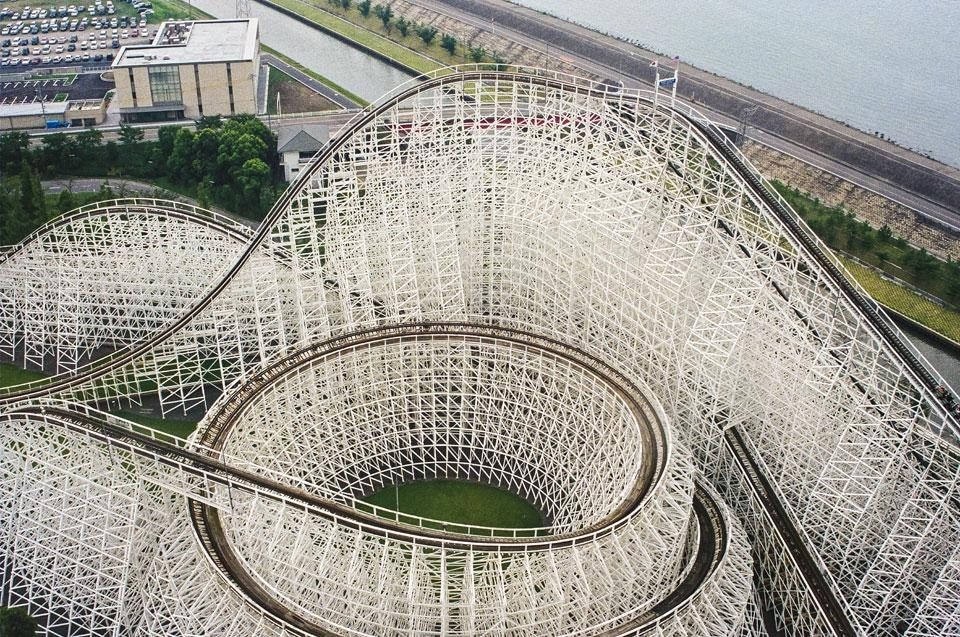Speed, force, energy, beauty, harmony, emotion, fear and excitement. This set of physico-perceptive factors with a potent reaction poétique offer a good starting point for thinking about the aesthetics of what may be the most spectacular architectures of amusement: roller-coasters. This is what the English-speaking world calls these veritable machines pour le plaisir, or perhaps even architectures de vertige, but to everyone else they are known by their original name as "Russian mountains".
From ships to trains, motorbikes and cars, planes and even spacecraft, the history of every means of locomotion reveals a peculiar combination of coherently harmonious, streamlined forms dedicated to speed, and the pleasure of overcoming extreme sensations like those of flight and gravitational force. In its more experimental or applicative phases, design progress in this field has had to reckon with such conflicts as desire and refusal, pleasure and fear, in relation to the exciting or scary emotions aroused by sudden, sometimes violent alterations of our bodily state.
Serving no useful travel purpose, roller-coasters spring from the idea introduced by technology and industrial society to pursue the evolution of this unique phenomenon of speed, seeking to reproduce the combined emotions that it sparks in what might be called "controlled" laboratory conditions. All this fascinating engineered architecture was not of course created to train pilots or astronauts, but as spectacular machines that induce intense emotional reactions. They are tailored for ordinary humans who willingly subject themselves to an enjoyably "death-defying" challenge for its own sake. This aspect raises all manner of stimulating design questions and solutions, involving the search for daring acrobatics and structural projects with increasingly complicated evolutions; plus a craving for extreme physical experiences akin almost to those of astronauts or top guns in supersonic fighter planes experiencing forces of up to 9G.
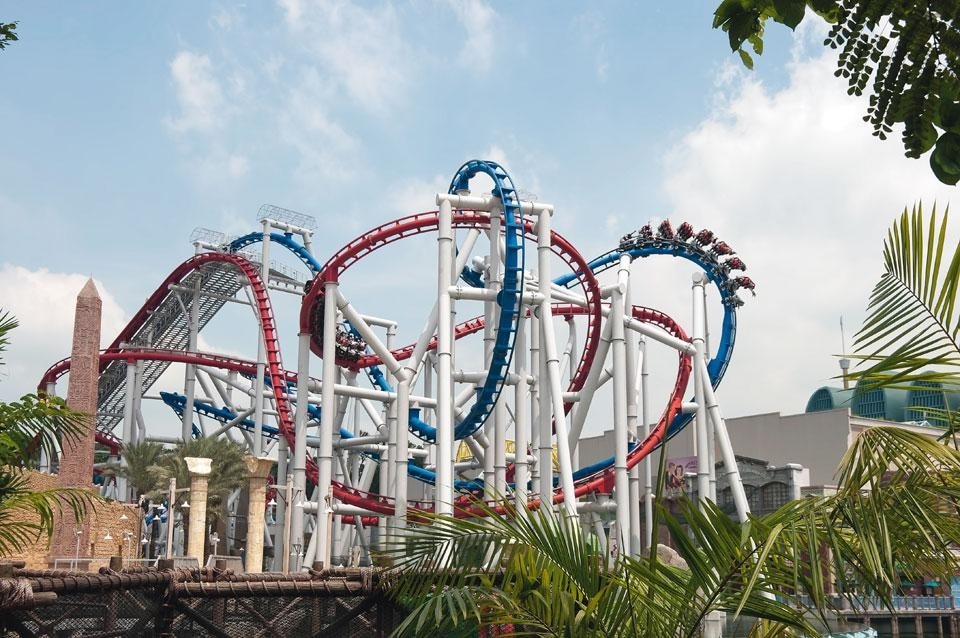
Browsing the rich and up-to-the-minute Roller Coaster DataBase, it is amazing to see how rapidly in the last decade these increasingly colossal and complex structures have sprung up everywhere, though chiefly in Asia and particularly in China.
It is also interesting to note the parameters used to classify the different types of amusement machines. The first basic subdivision is that of material and construction technology: all-wood structures on the one hand, steel on the other. The wooden ones (which are more classic and traditional, but still being constructed today) have the charm of being denser — hence also very sculptural — in their structural texture, making these large modular architectures look like sinuous mountains, or even gigantic frozen waves.
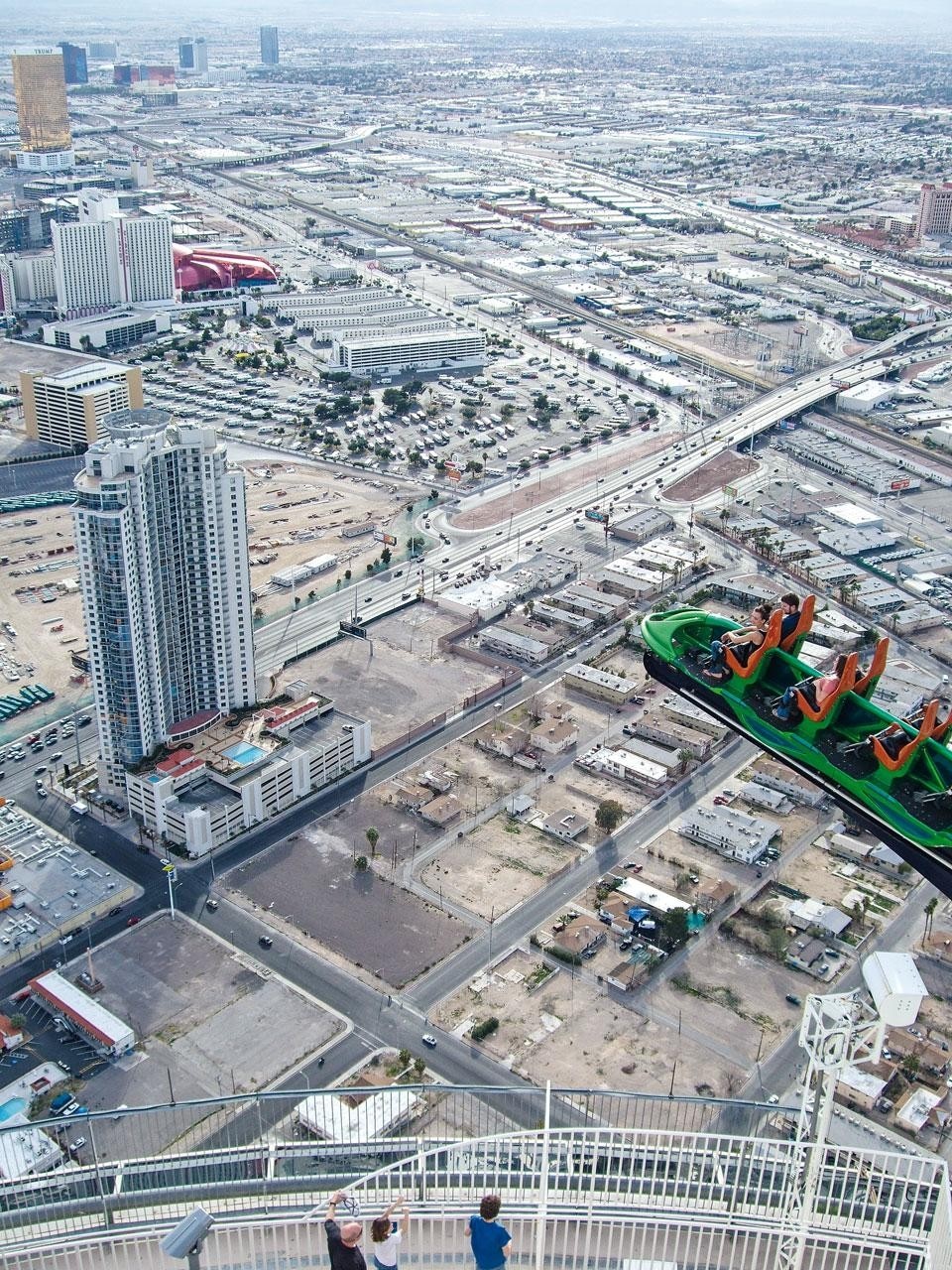
The fast pace of technological and formal innovations also sheds light on today's standard yardstick for classifying these types of machine, i.e. that of records per speciality: length, height, speed and loops, meaning the number and complexity of evolutions and revolutions performed during a ride. Naturally, this kind of vertigo-generating machine goes hand in hand with the concept of records, which fuel riders' appetites for ever more breathtaking ordeals that offer them an immediate sense of elation afterwards for having overcome their fear. Many have written that this mad urge to "look death in the face" is simply an attempt to defeat it, which may also be translated as a feeling of erasing, albeit for a couple of minutes, the dullness of everyday existence through the inebriating, wild sensation of risking one's life (in a controlled form, of course). Indeed, subjecting oneself to such peculiar stress is like releasing for a few seconds the innermost animal instincts of fear, courage, resistance and strength, in something verging on a drugged, esoteric experience.
As W.H. Auden wrote in 1966, in a verse from his poem Fairground:
A ground sacred to the god of vertigo
and his cult of disarray: here jeopardy
panic, shock, are dispensed in measured doses
by fool-proof engines.
Subjecting oneself to such peculiar stress is like releasing for a few seconds the innermost animal instincts of fear, courage, resistance and strength, in something verging on a drugged, esoteric experience
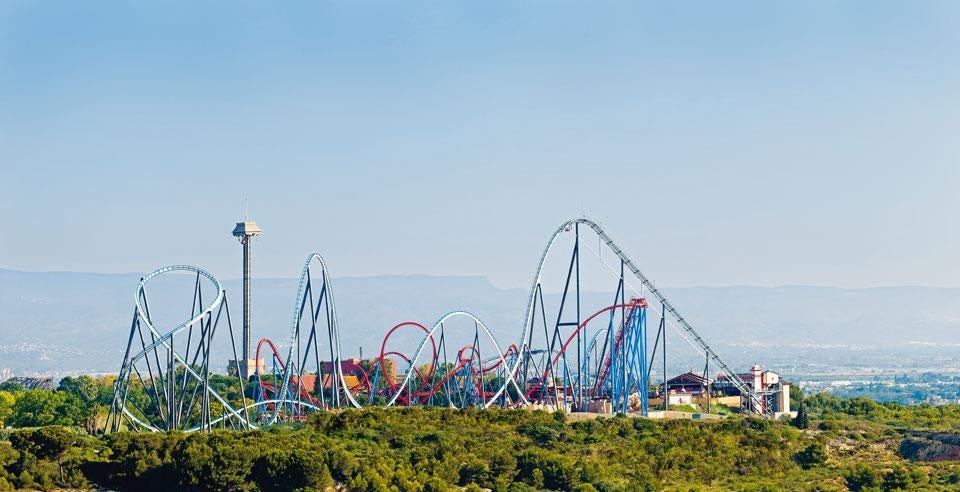
Steven Stern's article Off the Rails, published a few years ago in Frieze, offers an interesting comment on the subject of these architectures. "Despite a 100- year history," writes Stern, "roller-coasters suffer a dearth of criticism. While cultural theorists are in love with amusement parks, they have little to say about the rides themselves. You can find dozens of Baudrillard-quoting articles about Coney Island and Disneyworld, but not much about what it means to actually strap in and take the plunge.
Maybe that's because roller-coasters don't traffic in representation. They're not simulacra, but the real thing: more like drugs than movies, working directly on the stomach and the inner ear. To call the experience 'visceral' is, for once, not an exaggeration. No matter how theme parks might dress them up with borrowed narratives — you're on a rocket, a runaway train, you're Batman — what happens on a ride is almost entirely a matter of physics and physiology."
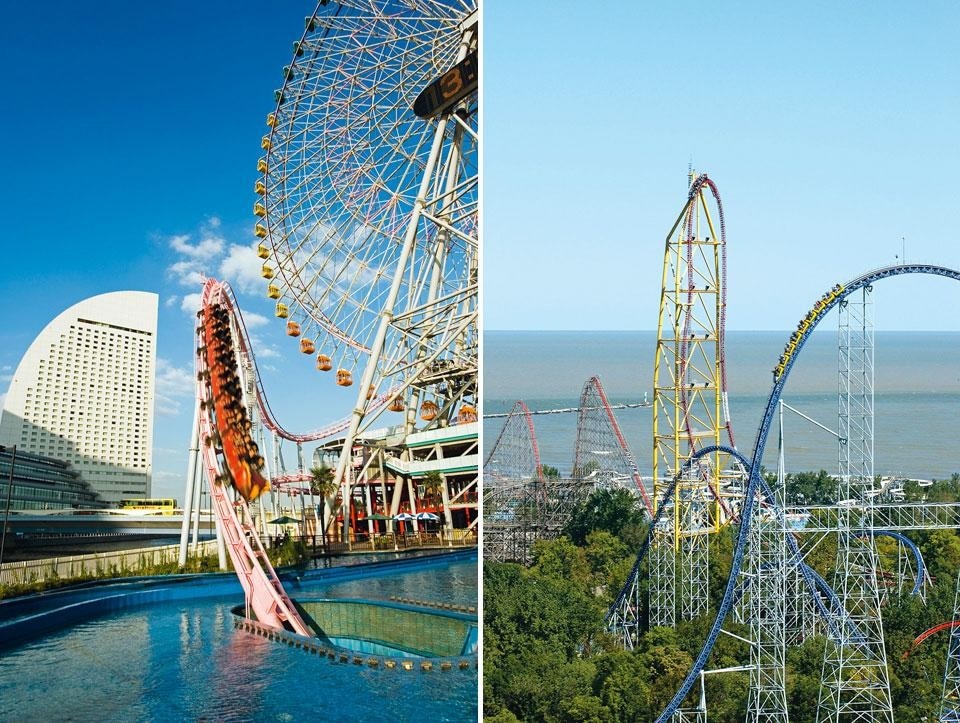
To follow up on Steven Stern's reasoning, it has to be recognised that the theme of temporary architecture dedicated to entertainment has, together with the world of fairs and expos, gained a permanently strategic role in the interpretation of genetic changes in the urban scene. This is partly thanks to Rem Koolhaas's Delirious New York. A Retroactive Manifesto for Manhattan published in 1978, in which he outlined his view of the myth of the modern American city in the opening chapter "Coney Island: the Technology of the Fantastic".
Koolhaas wrote: "At the junction of the 19th and 20th centuries, Coney Island is the incubator for Manhattan's incipient themes and infant mythology. The strategies and mechanisms that later shape Manhattan are tested in the laboratory of Coney Island before they finally leap toward the larger island. Coney Island is a foetal Manhattan." Among these "technologies of the fantastic", a place of honour certainly belongs to the legendary roller-coasters of Coney Island: Thunderbolt (1925), Tornado (1926) and Cyclone (1927), the latter having been a US National Historic Landmark since 1991.
It must also be recognised that this interpretation had already been identified a few years earlier by other leading theorists and architects, engaged in a critical and alternative survey of the evolutionary models in urban culture. Think of Cedric Price with his Fun Palace of 1962, or of Andrea Branzi who in 1966, a few months before the foundation of Archizoom, submitted an amusement park project as his degree thesis; and especially of Guy Debord, who in 1967 published his seminal theoretical book Society of the Spectacle. It may also be worth considering that Domus has never published any roller-coasters. However, this term has been used several times to describe such projects as the Centre Georges Pompidou by Piano and Rogers, or some of Gehry's designs. These architectures also represented a "dream-nightmare" in relation to their point in history, representing and "guarding" some of our innermost anxieties as men and women overwhelmed by the "roller-coasters" of contemporary everyday life. Giampiero Bosoni, academic and design historian



